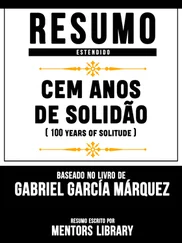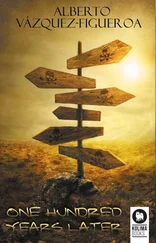AVENUE DUBUISSON. Underneath the bridge of Rue Caulaincourt are the iron columns supporting it, forged in 1888 in the blast furnaces of Montluçon. A joyful flowerbed of red and yellow tulips has been planted on the roundabout.
AVENUE PRINCIPALE. Armies of watering cans await the visitors who have come to look after the graves of their loved ones. I discreetly head for the cemetery gate. I will write a letter to Nathalie Meyer: “I was very fond of your father and I want to thank you for allowing me to get to know him.” Pierre taught me a lot. I exit the cemetery.
AVENUE RACHEL. Incredibly calm. Funerary dignity (monumental masonry), bistro, funeral parlor, florist. On the 15th of May, 1796, General Bonaparte made his entry…
BOULEVARD DE CLICHY. In contrast, sound and fury. The Moulin Rouge, red, not dark gray like the last time I saw it in a black and white archival photo showing two German soldiers joking with two blonde women. How did you say “sex toys, 2 euros” in German in 1942? Definitely two soldiers: officers like Kürz probably didn’t visit this type of neighborhood. Pierre lived right behind it at that time, in an attic room on Rue Véron, he said. He would’ve done what he’d had to do, transporting leaflets or other things, in a peaceful manner, because I already imagine him at peace.
RUE BLANCHE. I could take bus 68 home. But I’m going to walk for a little while, I’ll take it further along. I walk down Rue Blanche. Blanche, Dante, and then I think of Rue Dante and Rue Lagrange, for their assonance. On the sidewalk, an elderly woman walking in the opposite direction up the slope has stopped to catch her breath. I am again reminded of Pierre, who would always make the trip down and back up his three floors to buy the macaroons he used to offer me with the coffee he’d prepare whenever I arrived. I saw him for the last time in February, I believe. He had just celebrated his ninety-eighth birthday. He was invaluable and precise as an eyewitness. And he was funny. He used to challenge me: “Being the historian that you are…,” he would give me tests: for example, I managed to find the source for each of the twenty-two articles he had given me, higgledy-piggledy in a big brown envelope — articles that had been saved, over the years, by Marguerite M., Mireille Duvivier, and Pierre himself… He lived a full life and observed his entire century. I pass the Blanche-Calais bus stop — Rue Blanche is blocked, I’ll go just as fast on foot.
SQUARE D’ESTIENNE-D’ORVES. The Resistance member with his fine aristocratic name. He was “the one who believed in heaven” in one of Aragon’s poems. That may be why they named this square after him. The Church of the Trinity is certainly ugly, but I still think “Trinité—d’Estienne d’Orves” sounds rather nice. He was a polytechnician, too. There are all sorts of polytechnicians. Like the two boys from the same year, Gorenstein and M. The fact that both fell in love with the same girl is quite a common occurrence. That both were wounded in the war is just as common. What’s more original is the fact that both were treated in the same hospital, by the same nurse.
RUE DE CHATEAUDUN. A family visiting from the county asks me how to get to the Galeries Lafayette.
I point them towards RUE DE LA CHAUSSÉE-D’ANTIN. Which I take slowly, in order to stay behind them. There are lots of people and lots of the usual stores, the ones that make all cities look like each other. In any case, this is true on the street level, because above that, it’s definitely Paris, with its history and its fractures.
I cross BOULEVARD HAUSSMANN. Fittingly. More and more pedestrians, customers, tourists.
Behind the Opera Garnier, I cross RUE MEYERBEER. Meyerbeer, as in the composer of the opera Robert le Diable , not Meyerbeer as in Robert Gorenstein’s psychiatrist. Meyerbeer, Doctor Meyerbeer, thrown off a train. On the other side, the Garnier’s majestic steps. Pierre told me about a memory that his wife, Bernadette, had shared with him (she hadn’t been there herself but she knew about it): Kürz, during one of his trips to Paris, had taken Mortfaus to the opera. During his trip in June 1942, he had said he wanted to do it. Apparently, he fulfilled his wish. Pierre had described for me the look of this “broken face” from the First World War, both proud and embarrassed to be climbing the steps of the Paris Opera arm in arm with a German officer in full uniform — which Pierre hadn’t even been there to see. No date, not even a direct testimony. I remember that Pierre said that Bernadette had told him that someone had told her that her father… Not very reliable. Pierre told me that Bernadette had told him that Marguerite had told her that she had had nausea on April 8, 1921, while watching a solar eclipse — that still passes the test, but not the other story…
AVENUE DE L’OPÉRA. I turn the corner and turn back around to look at those famous steps. I know lots of stories like that. Certainly true. Or almost. In America, this is called “common knowledge.” Actually, in the United States, and concerning Kürz, a story has long been told about the biologist with blue eyes, Emil Schreiber, the one who played in a trio with the Tiedemanns. Supposedly, Kürz offered to “Aryanize” Schreiber’s children (who had just one Jewish grandparent — André Silberberg would have called them “quarter-Jews”) so that Schreiber could stay in Germany. I’m no longer thinking about taking the bus and then a 68 (another one) slips right by. There isn’t much to see on Avenue de l’Opéra: luxury shoes, banks, jewelry, travel agencies, yes, but not one bookstore left. Only the street signs remain for reading.
RUE DANIELLE-CASANOVA. A member of the Resistance, a communist, killed at Auschwitz in 1943, has her street in this neighborhood where there’s probably no one left who knows what she did.
And I stop at RUE DES PYRAMIDES. On the 2nd of July, 1798, General Bonaparte entered Alexandria…
RUE DE ROHAN. The tourist population becomes denser.
I pass the arches of the Louvre and walk along the side of the Museum of Decorative Arts in the JARDIN DES TUILERIES. The city is loaded with history, without speaking of the Paris Commune and the war waged on it by the government in Versailles (and the beautiful, chateau-less Tuileries garden that resulted from it). I inevitably find myself in the grandiose perspective between the two Arcs de Triomphe: the Carrousel arch here and, there, down the Champs-Élysées, the Tomb of the Unknown Soldier. I finally understand why it’s here, in this same garden, that in May 1939 M. declared his love of Germany and his vision of France and Germany dominating Europe together to his German guest. Today, there’s a lot of noise, the happy shouts of a bunch of kids on top of a statue. It’s spring break somewhere, but not in Paris, since my daughter is at school today. The two boys in the cemetery must have had to miss class, or else they live out in the country. There’s a lot of dust on the garden paths.
AVENUE DU GÉNÉRAL–LEMONNIER. I read the plaque. This general was one of the heroes from the Indochina War. Still thinking of M., I wonder what he did, said, thought, about decolonization and the colonial wars. He was directly concerned, he whose family owned and operated a plantation in Senegal. Too late to ask Pierre.
I’ve crossed the quay and now take the PONT ROYAL, on which I stop for a moment to contemplate the sparkling ripples of the Seine. Im wunderschönen Monat Mai … Not too far from here is the gilded cupola of the French Institute where, probably, the Academy of Sciences is unshakably carrying on with its work. This city may be steeped in history, but I must confess I don’t know whether they threw the Algerian protestors into the Seine from this bridge. There was no more night watchman of the Pont-au-Change on the 17th of October, 1961…
Читать дальше












